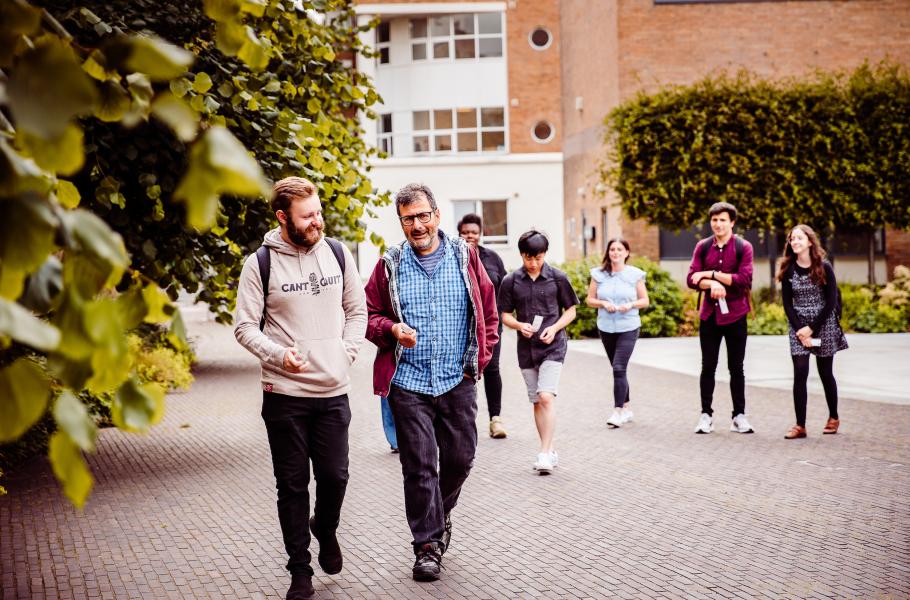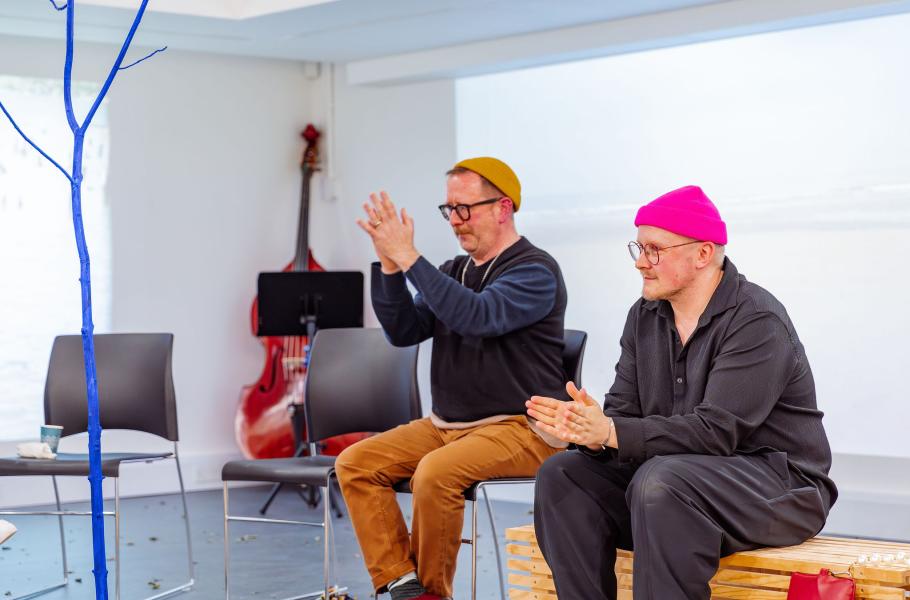How does the voice of a buried river sound? Come and reveal a hidden secret with us!
Many don't know it, but beneath our feet, below our city, the Mill Race stream still flows under Lancaster. Once the lifeblood of local industry but long covered over, today it lies hidden, unpredictable, continuing to make its presence felt.
Flow: Marking the Mill Race is a creative event for everyone to see, experience and be part of. Together we will expose the route of the Mill Race above ground with our bodies and voices, coming together to think about what has made our city and what will shape its future.
The event will take place in the Mill Race area, starting in St. John's Church on North Street at 3.30pm on Sat 30 April.
What Is Going To Happen At The Event?
We are asking everyone and anyone from Lancaster, or who would like to come to Lancaster, to form a line along the route of the Mill Race, starting from where it emerges onto the Lune near the Millennium Bridge. We will pass sounds and actions along the line reflecting the water that's under our feet.
Can Anyone Take Part?
Absolutely, yes please! We want people of all ages and abilities to be involved and have designed the event around this.
Why Are We Doing This?
You may already know that the Mill Race area of the city will shortly be redeveloped. A programme of cultural activity will accompany this, and Flow: Marking the Mill Race is the first of these. We want to begin the programme by marking where the watercourse that gives its name to the area lies, and to bring people together to do this.
What Are We Asking You To Do?
Either just show up on the event day, or sign up to join a workshop. It's crucial that the whole city is represented by as many people as possible, so we'd love to have you, your family and friends there.
The event itself will last around 15 minutes.
You will be given instructions about the sounds you need to make using your voice, hands and feet. But really you just need to copy the people next to you. The event is a collaboration between everyone who takes part, and full instructions will be given on the day.
And just to be clear - you won't be asked to sing!
How Do You Get Involved?
On 30 April 2022 - join our free pre-event workshop, find out a bit more and have a go before the event proper. More details and booking here.
On 30 April 2022 - come along to the event. Join in or just watch. We'd love you to register here so we have an idea of numbers. It is free to watch and take part.
Why Is The Mill Race Important?
The origins of the Mill Race are lost in the mists of time, but it's thought that it originally dates back to the Roman origins of the city. Later mills and other industries grew up along its banks and it is shown on maps dating back to at least 1610. It's during this time that Lancaster established itself as a key settlement in the north of England and it is this foundation that has shaped the city we know today. Although culverted from the late 1800s because of health concerns, the Mill Race continues to make its presence felt, most recently in the floods of 2015.
The area of the city to which the Mill Race gives its name is about to be redeveloped. This event links the origins of Lancaster and the modern city. It is an opportunity for dialogue and explanation of the uneasy, but nevertheless important relationship between the city and the human-made watercourse which flows beneath it.
Where Can I Find Out More About The Mill Race?
There is an excellent history of the Mill Race in the Mill Race Conservation Management Plan.
Lancaster University's School of Computing and Communication, Imagination Lancaster and Highwire Centre for Doctoral Training have carried out some research about the Mill Race. Some more information is available here and here.
There is an information board in the park on the Green Ayre.
You can hear the Mill Race! Put your ear against the grating in the alleyway opposite St John's Mews.
Find out about the event that started off our Mill Race Programme here.
Who Are The Artists?
Loz Kaye
Loz Kaye has worked extensively as a Musical Director, Choir Leader, Vocal Teacher and Composer. His enthusiasms are inclusive singing and the public power of music. Currently he is Director of Sound for Separate Doors' national ensemble and Musical Director of Hope Mill Community Choir. He has led many projects in Lancashire and Lancaster / Morecambe in particular, including being former Artistic Director of More Music Morecambe.
David Boultbee (BREAD art)
David explores the space where people, place, art and technology collide. He works with people and communities to create artworks that explore and engage with places and spaces. He uses light, sound and interactive technology to make works that gently ask you to stop and notice your surroundings. He has worked extensively across the North West and beyond over the last ten years. David created Beacons with Lancaster Arts in 2020
This project is produced by Alice Booth, with support from Steve Fairclough. If you have any questions, contact alice@lancasterarts.org
Flow: Marking the Mill Race is part of an exciting three-year cultural programme, 'Mill Race: Flow of Change'. This will celebrate the Mill Race area as a core and dynamic part of Lancaster that is informed by its heritage as well as its emerging, contemporary character. The programme will complement the Lancaster High Streets Heritage Action Zone being delivered by Lancaster City Council. Both programmes are funded by Historic England.




